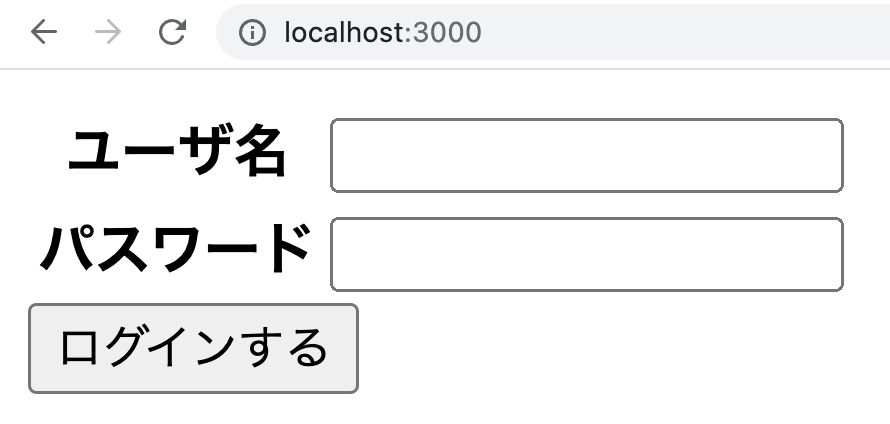GET リクエストと POST リクエスト
この章では教材の「フォーム」「GET リクエストと POST リクエスト」の内容を扱っています。
ユーザ名とパスワードを入力してログイン
ユーザ名とパスワードを入力してログインするサイトを作ってみましょう。
- 正しいユーザ名とパスワードを入力すると、「ようこそ〇〇さん」(〇〇はユーザ名)と表示されます。
- 存在しないユーザ名、または間違ったパスワードを入力すると、「ユーザが存在しないか、パスワードが間違っています」と表示されます。
※ユーザ名とパスワードはあらかじめサーバー側で定義しておきましょう。

解答
server.js
const express = require("express");
const app = express();
const data = { tanaka: "1234", sato: "9999" };
app.use(express.urlencoded({ extended: true }));
app.use(express.static("static"));
app.post("/user", (request, response) => {
if (request.body.password === data[request.body.user]) {
response.send(`ようこそ、${request.body.user}さん!`);
} else {
response.send("ユーザが存在しないか、パスワードが間違っています");
}
});
app.listen(3000);
index.html
<!DOCTYPE html>
<html lang="ja">
<head>
<meta charset="UTF-8" />
<title>ログイン</title>
</head>
<body>
<form action="/user" method="post">
<table>
<tr>
<th>ユーザ名</th>
<td><input name="user" /></td>
</tr>
<tr>
<th>パスワード</th>
<td>
<input name="password" type="password" />
</td>
</tr>
</table>
<button type="submit">ログインする</button>
</form>
</body>
</html>
注意
このシステムでは、tanaka や sato などのユーザ名をキーにしているため、同名の人物が存在するとログインできなくなります。
本来はそのような場合も想定し、{ 自動で発行したid: { name: "名前", password: ""}} のようなモデルを使って、ユーザを登録するたびに id を自動で発行し、その id をキーにするようにするとよいでしょう。
詳細はデータベースや Cookie について理解したのちに、Cookie の章の課題等を通して学習してください。